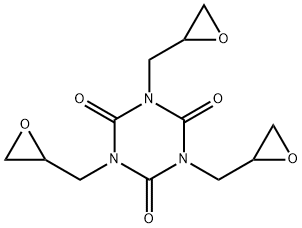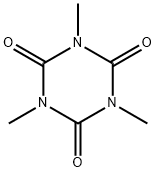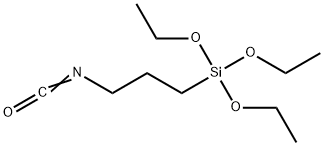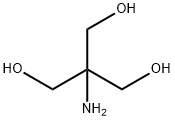1,3,5-Triglycidyl isocyanurate
Synonym(s):1,3,5-Tris(oxiran-2-ylmethyl)-1,3,5-triazinane-2,4,6-trione;TGIC;Triglycidyl isocyanurate
- CAS NO.:2451-62-9
- Empirical Formula: C12H15N3O6
- Molecular Weight: 297.26
- MDL number: MFCD00080670
- EINECS: 219-514-3
- SAFETY DATA SHEET (SDS)
- Update Date: 2025-01-27 09:38:02

What is 1,3,5-Triglycidyl isocyanurate?
Description
Occupational contact dermatitis can occur in people producing this chemical, in those producing the powder coat paint and in sprayers.
Chemical properties
White powder or chunks
The Uses of 1,3,5-Triglycidyl isocyanurate
1,3,5-triglycidyl isocyanurate be used for curing agent of polyester and acrylic resin carboxyl-containing powder coating, manufacturing an electrical insulating laminates, adhesives, plastics stabilizers.
The Uses of 1,3,5-Triglycidyl isocyanurate
TGIC is widely used as a cross-linking agent or curing agent in powder coating industry, It is used also in the printed circuit board industry, electrical insulation and as a stabilizer in plastic industry. Typical applications of polyester TGIC powder coatings are where sharp edges and corners exist such as on automotive wheels, air conditioners, lawn furniture, and air conditioner cabinets.
The Uses of 1,3,5-Triglycidyl isocyanurate
Triglycidyl isocyanurate is used as cross-linker in heat-cured polyester paints, such as laminated sheetings, printed circuits, tools, inks, adhesives, lining materials etc.
General Description
White crystalline solid.
Air & Water Reactions
Insoluble in water.
Reactivity Profile
Epoxides are highly reactive. They polymerize in the presence of catalysts or when heated. These polymerization reactions can be violent. Compounds in this group react with acids, bases, and oxidizing and reducing agents. They react, possibly violently with water in the presence of acid and other catalysts.
Fire Hazard
Flash point data for 1,3,5-Triglycidyl isocyanurate are not available; however, 1,3,5-Triglycidyl isocyanurate is probably combustible.
Flammability and Explosibility
Non flammable
Contact allergens
Triglycidyl isocyanurate is a triazine epoxy compound used as a resin hardener in polyester powder paints, in the plastics industry, resin molding systems, inks, and adhesives. Occupational contact dermatitis can occur in people producing this chemical, in those producing the powder coat paint, and in sprayers. Respiratory symptoms have been observed.
Properties of 1,3,5-Triglycidyl isocyanurate
| Melting point: | 95-98°C |
| Boiling point: | 438.78°C (rough estimate) |
| Density | 1,42 g/cm3 |
| vapor pressure | 0.007Pa at 20℃ |
| refractive index | 1.5290 (estimate) |
| storage temp. | Store at 4°C |
| solubility | DMSO: 50 mg/mL (168.20 mM) |
| form | powder to crystal |
| pka | -2.44±0.20(Predicted) |
| color | White to Almost white |
| Water Solubility | <0.1 g/100 mL at 20 ºC |
| CAS DataBase Reference | 2451-62-9(CAS DataBase Reference) |
| EPA Substance Registry System | Triglycidyl isocyanurate (2451-62-9) |
Safety information for 1,3,5-Triglycidyl isocyanurate
| Signal word | Danger |
| Pictogram(s) |
 Corrosion Corrosives GHS05  Skull and Crossbones Acute Toxicity GHS06  Health Hazard GHS08 |
| GHS Hazard Statements |
H317:Sensitisation, Skin H318:Serious eye damage/eye irritation H340:Germ cell mutagenicity H373:Specific target organ toxicity, repeated exposure H412:Hazardous to the aquatic environment, long-term hazard |
| Precautionary Statement Codes |
P201:Obtain special instructions before use. P273:Avoid release to the environment. P280:Wear protective gloves/protective clothing/eye protection/face protection. |
Computed Descriptors for 1,3,5-Triglycidyl isocyanurate
1,3,5-Triglycidyl isocyanurate manufacturer
Trimax bio sciences private ltd
New Products
1-Amino-1-cyclohexanecarboxylic acid Cycloleucine 6-Bromo-3-iodo-1-methyl-1H-indazole 3-(2,4-Dimethoxybenzyl)dihydropyrimidine-2,4(1H,3H)-dione 7-Bromo-1H-indazole ELECTROLYTIC IRON POWDER 2-Methyl-2-phenylpropyl acetate 1-Aminocyclobutanecarboxylic acid 1-(2-Ethoxyethyl)-2-(piperidin-4-yl)-1H-benzo[d]imidazole hydrochloride Decanonitrile tert-butyl 4-(1H-benzo[d]iMidazol-2-yl)piperidine-1-carboxylate 4-Ethylbenzylamine Methyl 5-bromo-2-chloro-3-nitrobenzoate N-(5-Amino-2-methylphenyl)acetamide 2-Chloro-3-nitropyridine 5-Bromo-2,3-dimethoxypyridine methyl 6-chloro-2-(chloromethyl)nicotinate 2-methoxy-4-methyl-5-nitro pyridine 2-iodo-5-bromo pyridine 2-amino-4-methyl-5-nitro pyridine 5-Fluoro-2-Oxindole methyl L-alaninate hydrochloride diethyl L-glutamate hydrochloride Ethyl tosylcarbamateRelated products of tetrahydrofuran


![TRIS[2-(3-MERCAPTOPROPIONYLOXY)ETHYL] ISOCYANURATE](https://img.chemicalbook.in/CAS/GIF/36196-44-8.gif)





You may like
-
 Tris-(2,3-epoxypropyl)-1,3,5-triazine-2,4,6-trione 2451-62-9 98%View Details
Tris-(2,3-epoxypropyl)-1,3,5-triazine-2,4,6-trione 2451-62-9 98%View Details
2451-62-9 -
 Triglycidyl Isocyanurate CAS 2451-62-9View Details
Triglycidyl Isocyanurate CAS 2451-62-9View Details
2451-62-9 -
 Tris(2,3-epoxypropyl) isocyanurate CAS 2451-62-9View Details
Tris(2,3-epoxypropyl) isocyanurate CAS 2451-62-9View Details
2451-62-9 -
 Ethoxymethylenemalononitrile 99% HPLCView Details
Ethoxymethylenemalononitrile 99% HPLCView Details
123-06-8 -
 Diethyl Disulfide 99% HPLCView Details
Diethyl Disulfide 99% HPLCView Details
110-81-6 -
 6285-05-8. 1-(4-chlorophenyl) propan-1-one 98%View Details
6285-05-8. 1-(4-chlorophenyl) propan-1-one 98%View Details
6285-05-8. -
 4-chloro-3,5-dinitropyridine 98%View Details
4-chloro-3,5-dinitropyridine 98%View Details -
 171663-13-1 tert-Butyl 3-bromobenzylcarbamate 98%View Details
171663-13-1 tert-Butyl 3-bromobenzylcarbamate 98%View Details
171663-13-1